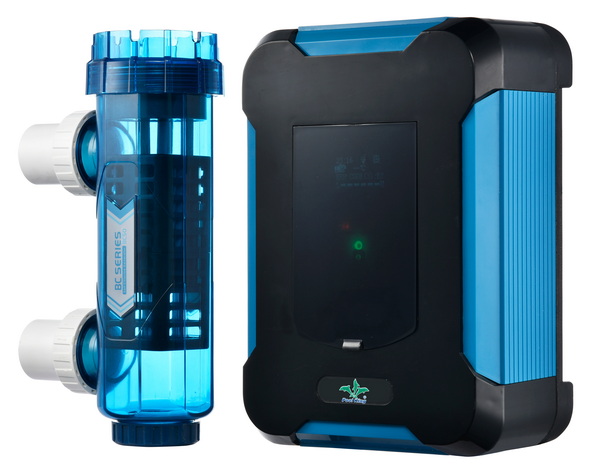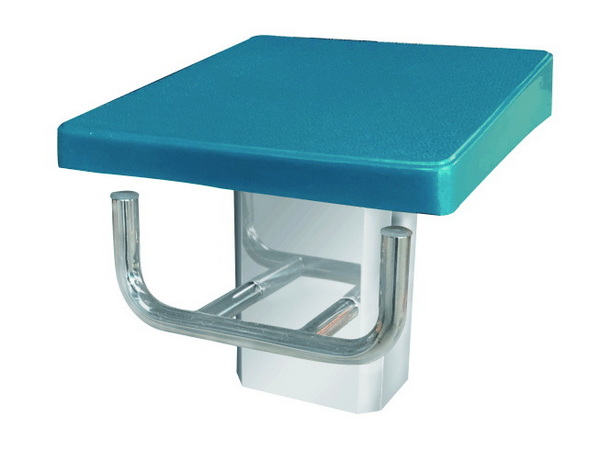Views: 222 Author: Tina Publish Time: 2025-07-11 Origin: Site








Content Menu
● Importance of Equipment Room Protection
● Understanding Concrete Risks in Pool Environments
● Best Practices for Equipment Room Design
>> Room Layout
>> Electrical and Plumbing Considerations
● Waterproofing Solutions for Concrete
● Ventilation and Moisture Control
>> Additional Moisture Control Tips
● Routine Maintenance and Inspections
● Organization and Cleanliness
● Case Study: Effective Waterproofing in Action
>> 1. What is the best way to waterproof a concrete equipment room?
>> 2. How often should I inspect my equipment room for leaks?
>> 3. Can I use regular paint as a waterproofing solution?
>> 4. What should I do if I find cracks in the concrete?
>> 5. How can I reduce humidity in my equipment room?
A swimming pool equipment room is the nerve center of any pool system, housing pumps, filters, heaters, and control units. Ensuring this space is protected from concrete-related issues such as leaks, cracks, and moisture ingress is essential for the longevity and efficiency of pool operations. This comprehensive guide explores design principles, waterproofing strategies, maintenance routines, and practical solutions to prevent concrete problems in pool equipment rooms. Throughout the article, you'll find detailed explanations and practical advice to help you visualize and implement best practices.

A well-designed equipment room not only ensures the smooth operation of pool systems but also prevents costly repairs and downtime. Concrete, while durable, is susceptible to water damage, cracking, and chemical corrosion if not properly protected.
- Equipment Longevity: Protecting the room from moisture and leaks extends the life of pumps, filters, and electrical systems. Water damage can cause rust, electrical failures, and mechanical breakdowns, leading to expensive replacements.
- Safety: Prevents hazardous conditions such as slippery floors, mold growth, and electrical shorts. Moisture accumulation can create dangerous environments for maintenance personnel.
- Efficiency: A dry, organized environment improves maintenance efficiency and reduces energy costs by preventing unnecessary strain on equipment.
Concrete is commonly used in pool equipment rooms due to its strength and versatility. However, it faces unique challenges:
- Water Ingress: Pool water, groundwater, or condensation can seep into concrete, causing deterioration. Concrete is porous by nature, making it vulnerable to water penetration if not sealed properly.
- Cracking: Temperature fluctuations, structural settling, and vibrations from equipment can lead to cracks. These cracks serve as pathways for water and chemicals, accelerating damage.
- Chemical Exposure: Chlorine and other pool chemicals can react with concrete, leading to corrosion and weakening. Over time, this chemical attack can degrade concrete surfaces and compromise structural integrity.
Understanding these risks is the first step in implementing effective prevention measures.
- Proximity to Pool: Keep the equipment room as close to the pool as possible to minimize piping runs and reduce leak risks. Shorter pipe lengths reduce pressure loss and potential leak points.
- Elevation: Whenever possible, build the room above ground level to prevent groundwater intrusion. If the room must be below ground, ensure proper drainage and waterproofing are incorporated.
- Space Planning: Ensure enough space around each piece of equipment for maintenance and airflow. Crowded rooms increase the risk of damage and make inspections difficult.
- Access: Provide wide, unobstructed entry points for easy equipment replacement and servicing. Consider installing double doors or removable panels for larger equipment.
- Concrete Quality: Use high-grade, water-resistant concrete mixes with additives that reduce permeability. Incorporate fibers or plasticizers to improve durability.
- Floor Slope: Design floors with a gentle slope toward a floor drain to manage accidental spills and condensation. Proper drainage prevents standing water that can damage concrete and equipment.
- Waterproof Electrical Fixtures: Use waterproof or water-resistant electrical outlets and fixtures to prevent shorts.
- Proper Pipe Insulation: Insulate pipes to prevent condensation and freezing, which can cause cracks in concrete walls or floors.

Effective waterproofing is crucial to protect concrete surfaces from moisture and chemical damage.
- Application: Roll or spray polyurethane or acrylic-based membranes on concrete surfaces for seamless protection. These membranes create a flexible, durable barrier that adapts to minor surface movements.
- Advantages: Flexible, resistant to pool chemicals, and easy to repair. They also provide excellent adhesion and can be applied to vertical and horizontal surfaces.
- Application: Brush or trowel cement-based coatings onto surfaces; these bond well with concrete and fill small cracks. They are often used as a primer or base layer before applying other waterproofing materials.
- Advantages: High adhesion, excellent hydrostatic pressure resistance, cost-effective, and environmentally friendly.
- Materials: Use PVC, EPDM, or bituminous sheets adhered to walls and floors. These membranes provide a robust physical barrier against water ingress.
- Benefits: Superior puncture resistance and long-term durability. Installation requires skilled labor but offers reliable protection.
- Technique: Inject waterproofing resins or polyurethane foams into cracks or joints in the concrete to seal leaks from within. This method is especially useful for repairing existing leaks without major demolition.
- Professional Use: Best performed by specialists for lasting results. It can also be combined with other waterproofing methods for comprehensive protection.
- Epoxy Coatings: Apply epoxy-based coatings on floors and walls to resist chemical attacks and abrasion. Epoxy coatings also improve surface smoothness, making cleaning easier.
- Silane/Siloxane Sealers: These penetrate concrete surfaces to reduce water absorption while allowing vapor transmission, preventing trapped moisture.
Proper ventilation is essential to prevent condensation and humidity buildup, which can damage both concrete and equipment.
- Install Vents: Use mechanical or passive ventilation systems to ensure continuous airflow. Exhaust fans can remove humid air, while intake vents bring in drier air.
- Dehumidifiers: In humid climates, install dehumidifiers to maintain optimal moisture levels. Portable or built-in units can be used depending on room size.
- Monitor Humidity: Use sensors to track and adjust room conditions as needed. Maintaining relative humidity below 60% helps prevent mold growth and corrosion.
- Seal Doors and Windows: Use weather stripping and seals to prevent moisture intrusion from outside.
- Insulate Walls and Ceilings: Proper insulation reduces temperature differences that cause condensation.
- Control Pool Water Chemistry: Balanced pool water reduces corrosive vapors that can damage concrete and equipment room surfaces.
Regular maintenance is key to early detection and prevention of concrete and equipment room issues.
- Regular Sweeping: Remove dust, debris, and leaves to prevent clogging and moisture retention.
- Hose Down: Periodically wash floors and walls, ensuring water drains away efficiently. Avoid excessive water use to prevent saturation.
- Chemical Spill Management: Immediately clean up any chemical spills to prevent concrete corrosion.
- Leak Detection: Inspect for signs of water leaks, especially around joints, floor drains, and equipment seals. Use moisture meters or infrared cameras for hidden leaks.
- Sealant Inspection: Check waterproofing membranes and sealants for wear or damage. Reapply or repair as necessary.
- Component Maintenance: Clean and service pumps, filters, and heaters according to manufacturer guidelines. Replace worn seals and gaskets promptly.
- Crack Monitoring: Mark and measure any cracks to monitor growth over time. Small cracks should be sealed immediately.
- Floor Drain Maintenance: Ensure drains are clear and functional to prevent water pooling.
- Wall and Ceiling Checks: Look for efflorescence (white powdery deposits) indicating moisture migration through concrete.
A tidy equipment room reduces risks of accidents and makes maintenance easier.
- Storage Solutions: Use shelves and containers for chemicals and tools, keeping them off the floor to prevent contamination.
- Labeling: Clearly label pipes, valves, and electrical panels for quick identification during emergencies or repairs.
- Vegetation Control: Trim plants and shrubs away from the equipment room exterior to prevent debris accumulation and reduce humidity.
- Safety Signage: Post safety instructions and emergency contact information prominently.
A pool owner faced recurring water leaks in their basement equipment room. The room was prone to groundwater seepage and condensation due to poor ventilation and lack of waterproofing. The owner implemented a multi-layered waterproofing strategy:
1. Crack Injection: All visible cracks were injected with polyurethane resin to seal internal leaks.
2. Cementitious Coating: A cement-based waterproof coating was applied to all concrete surfaces.
3. Liquid Membrane: A flexible liquid-applied membrane was rolled over the coating for added protection.
4. Floor Drain Upgrade: The floor was re-sloped toward a new, larger drain with a backflow preventer.
5. Ventilation Installation: A mechanical ventilation system with humidity sensors and a dehumidifier was installed.
After these improvements, the equipment room remained dry during heavy rains and pool maintenance activities. The owner reported improved equipment performance and reduced maintenance costs, demonstrating the effectiveness of comprehensive waterproofing and environmental control.
Preventing concrete issues in a swimming pool equipment room requires a holistic approach: thoughtful design, robust waterproofing, diligent maintenance, and consistent organization. Proper location, quality materials, and layered waterproofing systems protect concrete from moisture and chemical damage. Ventilation and humidity control further safeguard both the structure and equipment. Regular inspections and cleaning catch problems early, while good organization enhances safety and efficiency. By implementing these strategies, pool owners and facility managers can safeguard their investment, ensure safety, and enjoy trouble-free pool operation for years to come.

The most effective approach combines liquid-applied membranes for seamless coverage, cementitious coatings for crack filling, and sheet membranes for high-traffic areas. Injection waterproofing is ideal for repairing existing leaks. Combining methods ensures protection against different types of water intrusion.
Conduct visual inspections monthly and after heavy rainfall. Schedule a professional assessment annually to ensure all waterproofing measures remain intact. Early detection prevents costly repairs.
No, standard paint does not provide adequate waterproofing for concrete. Use specialized waterproofing products designed for pool environments, such as liquid membranes or cementitious coatings.
Clean the area thoroughly, apply a crack repair compound or injection resin, and reinforce with a waterproof membrane to prevent future leaks. For larger cracks or structural concerns, consult a professional engineer.
Install proper ventilation systems, use a dehumidifier, and ensure all plumbing is leak-free. Regularly monitor humidity levels with sensors to maintain optimal conditions and prevent mold growth.
